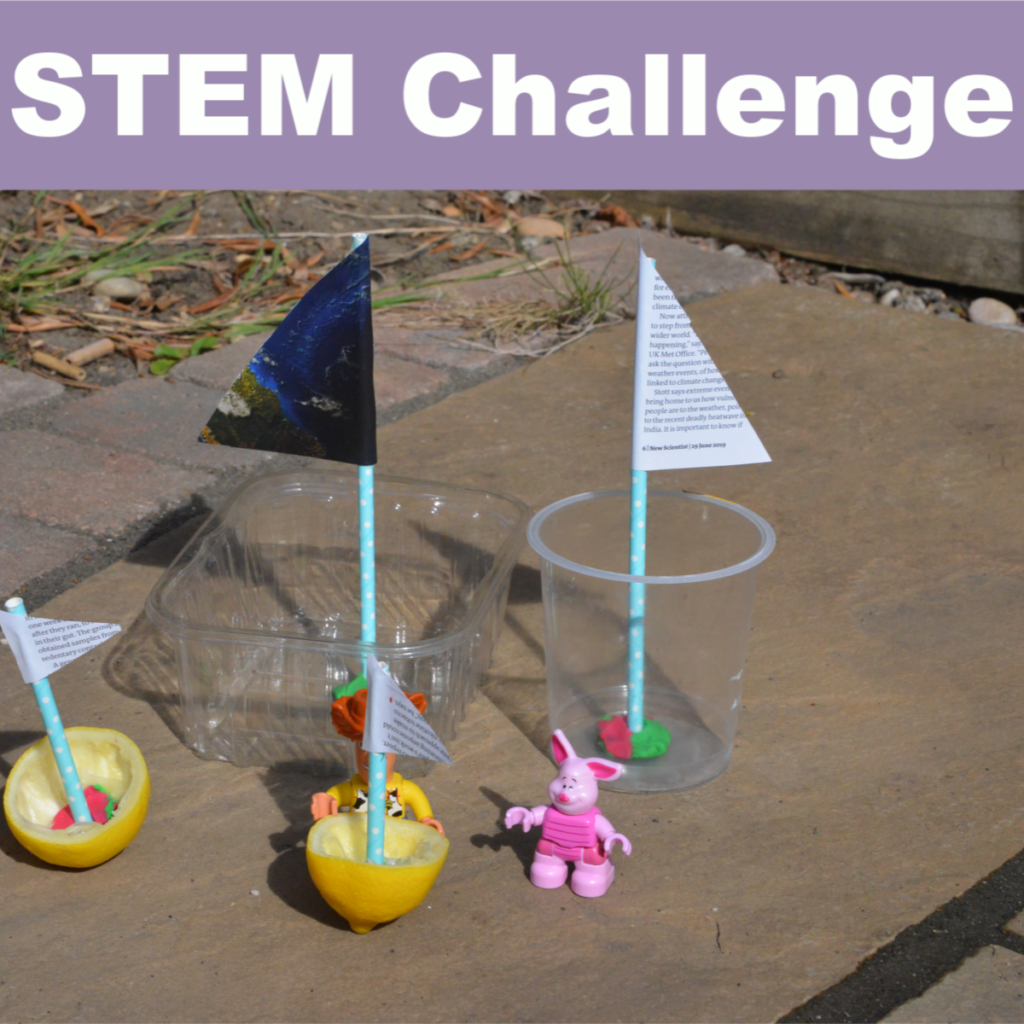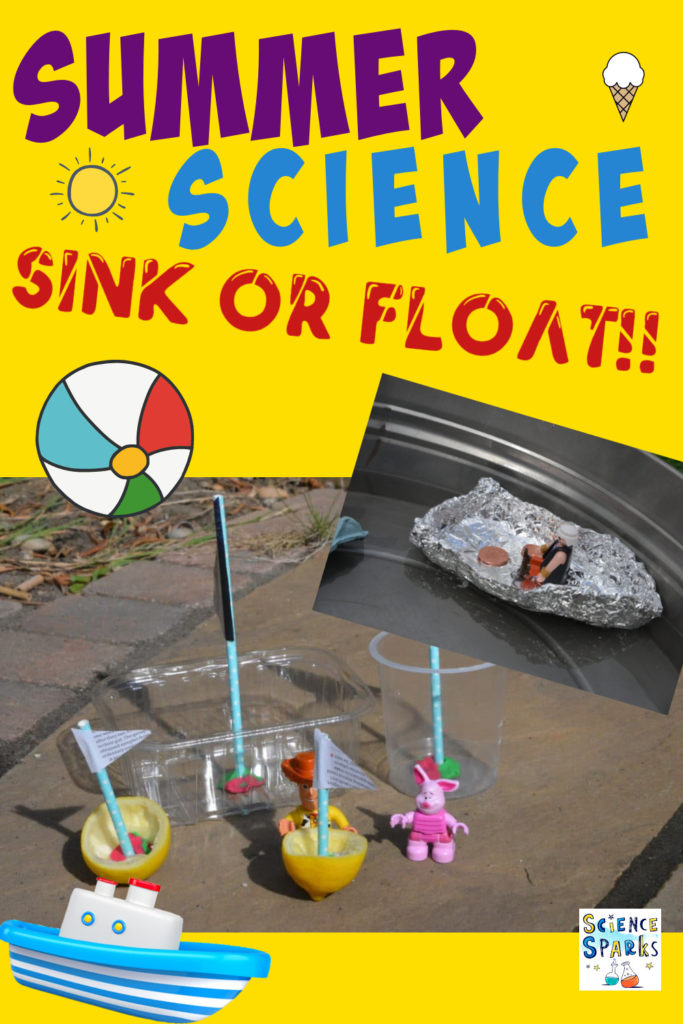Recycled boats are fun to make a great for exploring the concept of buoyancy or for little ones just very basic sink or float activity.
A sink or float experiment makes a great first science activity for preschoolers ( always watch them carefully around water ) and a fun first attempt at making a prediction or hypothesis for older children.
If you want to structure the activity like a real experiment you can also introduce the concept of variables where you only change one variable for each test. For example, use the same boat, but change the object inside. You can then follow that by using the same object but different boats and record the results.

What you need to make a recycled boat
Empty containers
Plasticine
Old magazines or newspaper
Straws
Double sided tape
Large container filled with water for testing

How to make a recycled boat
This bit is up to you! We made our recycled boats very basic, but you could make yours as fancy or simple as you want.
Red Ted Art has lots more homemade boat inspiration too!
Preschool floating and sinking science project
For younger children start by asking them to test different objects to see if they sink or float. Once they’ve tried a few ask them to predict whether the next one will sink or float. Empty ( and full ) water bottles, large stones, plastic or metal toys and pine cones are good things to start with.
The next challenge is to try to find a way to make an object that sank, float. One way to do this is to place it in a boat. Plasticine boats, aluminium foil boats or recycled boats like we made should work perfectly.

We had some lemons hanging around so made some lemon boats too, you can also make boats from melon, oranges, limes and other fruits with a thick skin. They float because the skin is full or air bubbles, which reduces the density.

Sink or Float – explore further
Find out how to make a lemon sink and why lemons float with this activity.
We love to theme our activities. Sink or float pirate style is always popular.
Keep it simple with a LEGO sink or float activity.
For older children discover why some objects float and some sink and find out how to make a ball that sinks, float!
For a slightly different sink or float experiment pour a layer of vegetable oil over water and try to guess which objects from a selection will float on each layer.

Last Updated on April 21, 2021 by Emma Vanstone

I really enjoyed this experiment, and testing it out with my four year old daughter. We had fun constructing the boat and even though she did realize it, developing a hypothesis.